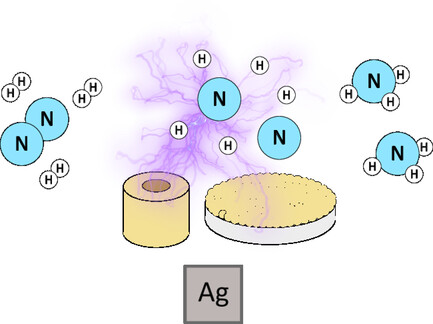Plasma catalysis combines the high-energy chemistry of plasma with the speed and selectivity of chemical reactions in catalysis. However, unlike well-established thermal catalysis, a better understanding of fundamental mechanisms is needed, as evidenced by the contrasting results reported in the literature. One main challenge is that not only the genuine catalytic effect may play a role, but both the support and the catalyst also impact the plasma, complicating the understanding. In this study, exploring the impact of support by comparing a single metal on various substrates made of the same material is focused on. Herein, silver on γ-alumina is used to investigate ammonia synthesis in N2/H2 plasma discharges. Beyond confirming the beneficial role of silver in ammonia formation, it is also found that the influence of support is crucial and it is affected by the preparation method. These findings contribute to clarifying the discrepancies in the literature results despite using the same materials.

Spadoni F., Perina S., Castellani G., Tosi P., Fornasiero P., Sglavo V.M. and Martini L.M. The Support Can Disguise the Catalytic Effect: the Case of Silver on Alumina in Plasma Ammonia Synthesis ChemSusChem (2025) https://doi.org/10.1002/cssc.202402778

